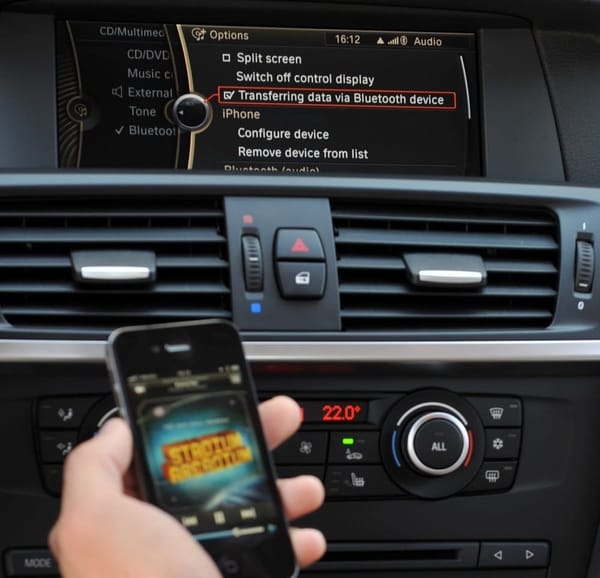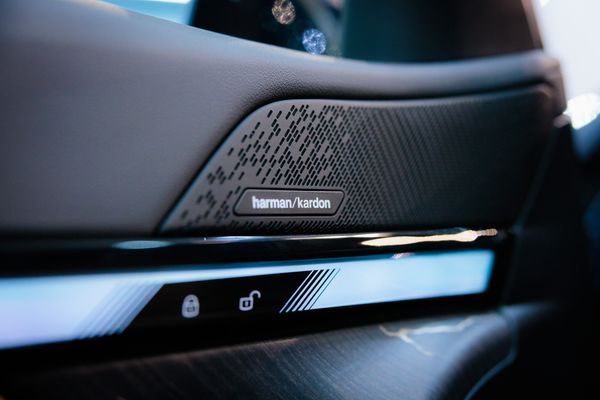BMW ELV Steering Lock Malfunction Fix [Comprehensive Guide]
![BMW ELV Steering Lock Malfunction Fix [Comprehensive Guide]](/content/images/size/w1200/2023/09/bmw-steering-lock-malfuction-warning.webp)
Alright, fellow car nerds, strap in! Ever had that heart-stopping moment when your beloved BMW decides it's just not in the mood to start? Welcome to the infamous world of steering lock malfunctions. Now, I know what you're thinking – "Not another BMW issue!" But fret not, because we're diving deep into the belly of the beast, and by the end of this guide, you'll be the go-to Beemer guru in your neighborhood.
From those pesky fault counters (yes, your car is silently judging you) to the age-old battery blues, we're about to unravel the mysteries of BMW's steering lock drama. And let me tell you, it's not just about turning a key or pushing a button; it's a saga of engineering quirks, electronic tantrums, and – most importantly – solutions.
Ready to geek out? Let's roll.
Understanding the Steering Lock Fault Counter
Now, before we tackle this beast, let's get nerdy with some BMW lingo. Enter the CAS control unit – no, not a secret agent gadget, but the brain behind your BMW's steering lock operations. This little box of tricks monitors the steering lock's current and makes notes every time it throws a fit.
Imagine your steering lock as that moody teenager. Too much current? It's going to sulk and log an error. Every time it throws a tantrum (i.e., the steering column lock finds unlocking a bit too strenuous), the CAS is there, marking it down on its naughty list, increasing the fault counter.
But why does this matter, you ask? Well, these counters aren't just for show. They play a crucial role in determining if and when your BMW throws up those ominous yellow or red warning lights. And trust me, in the world of BMW, understanding these nuances is half the battle won.
In layman's terms? Your BMW is keeping score. And if we're going to beat it at its own game, we need to understand the rules.
Onward!
Yellow vs. Red Steering Lock Light
Alright, gearheads, pop quiz time! Ever seen those yellow and red steering lock lights on your Beemer's dash? Sure, they look pretty, but they're also your car's way of sending you an SOS. But what do they really mean? Let's break it down.
First off, the yellow light. Think of it as your BMW's gentle nudge, a "Hey, something's amiss!" kind of warning. After the CAS control unit logs a certain number of faults (and trust me, that number isn't as generous as you'd like), it flashes this yellow beacon of impending doom. It's not full-blown panic mode yet, but it's the car's way of saying, "Look, pal, if you don't address this, we're heading to Red Alert."
And speaking of red... When you see this, it's the BMW equivalent of DEFCON 1. If you've been ignoring that yellow light (tsk, tsk), the CAS will soon escalate things by illuminating this red light of rebellion. The result? A BMW that flat-out refuses to start. Ouch.
So, the moral of the story? Yellow says, "Hey, let's chat." Red says, "We're done talking." And trust me, you don't want to get to the red.
To the bat cave! Let's fix this.
Steering Column Tension on Lock Cylinder
Alright, let's dive into another chapter of "Things You Didn't Know Could Tick Off Your BMW." Steering Column Tension. Sounds like a niche rock band, right? But in our Beemer universe, it's a key player.
Ever parked your car, cranked the steering wheel to one side, and just yanked out the key? Guilty as charged. But here's the deal – when you do that, especially at full lock or while gripping that wheel like you're arm-wrestling it, you're putting tension on the lock cylinder. This makes the electric motor work overtime to release the lock, and guess who's taking notes? Yep, our ever-watchful CAS module. And it's not thrilled.
This consistent pressure is like feeding your BMW a steady diet of junk food. Over time, repeated tension can cause the car to flash that yellow warning light. Keep it up, and soon, you'll be greeted by the dreaded red light – the ultimate "I told you so" from your car.
But here's the good news: prevention is as simple as parking protocol. Before you pull out that key, ensure your front wheels are straight. No drama, no tension, just smooth sailing.
And if you've been a serial offender? Don't sweat it. Just reset the ELV fault counter (we'll get to that) and start practicing some steering etiquette. Your BMW will thank you. And so will your wallet.
Stay tuned, fellow auto aficionados. We're just getting started.
Worn Battery
Ah, the battery. The heart of your car's electrical world. Now, in an ideal world, this trusty energy source would last forever, giving your BMW endless zest and zeal. But we live in the real world, and sometimes, that battery gets tired. And a worn-out battery? That's like asking an Olympic sprinter to run a marathon on an empty stomach.
When your battery starts showing its age or if there's a hiccup with the IBS sensor, it can't provide the juice the steering lock motor craves. And without that energy? The motor struggles to unlock the steering column. It's like trying to open a jar with greasy hands - you just can't get a grip.
Let me paint you a picture from my own archives: Once upon a time, I had an encounter with this very issue on an E84 X1. After replacing the battery (and not registering it, rookie mistake), I noticed some odd signs. No welcome lights, a perpetually confused clock, and then, the pièce de résistance, the red steering lock malfunction warning one fine morning. But, like a stubborn old mule, the car started, and the issue vanished as mysteriously as it appeared.
The fix? Often, it's as simple as replacing and registering a new battery. Sometimes, it's about tackling the IBS fault. But always, always, it's about paying attention to those subtle signs your BMW throws at you.
So, if your Beemer's behaving more like a sleepy sloth than a roaring lion, it might be time to check that battery. And hey, while you're at it, give it a little pep talk. Everyone needs a morale boost now and then.
Up next, the nitty-gritty of resetting all those pesky counters. Stay with me!How to Reset the Internal ELV Fault Counter
Pop the hood on any car, and you'll find a world of mechanical marvels. But delve deeper, and you're in the realm of electronic enigmas. One such mystery? The ELV fault counter. Think of it as your BMW's personal tally board, keeping track of every tiny hiccup and hiccup-adjacent event.
But what happens when that counter gets a little too enthusiastic, marking every faux pas like a strict school teacher? You reset it, of course! Consider it a fresh start, a clean slate, a digital do-over.
There are a few tools in our toolbox to tackle this:
- BMW’s ISTA: The official BMW software, a bit like the headmaster's office. A tad complex, but oh-so-effective.
- Toolset32: My personal favorite. Think of it as the Swiss Army knife of diagnostics. Quick, efficient, and no-nonsense.
- Other Diagnostic Scanners: The more the merrier! There are several out there that can get the job done.
After a successful counter reset, you're back to zero. It's like erasing a chalkboard. But here's the catch: If you haven't learned from past mistakes (like locking the steering wheel under tension), that error message will be back faster than you can say "Bavarian Motor Works."
And if you're thinking, "Reset and forget," think again. Always ensure you're running the latest software on the CAS module. It's like updating your phone's OS. Keeps things running smoothly.
Lastly, a piece of unsolicited advice from one car lover to another: If, after a reset, issues persist and it's not a habit causing them, consider giving your steering column some TLC. Cleaning, greasing, or in extreme cases, replacement might be in order.
But fear not! With knowledge comes power. And armed with this guide, you're on the road to becoming a BMW whisperer.
Stay tuned, folks. We've got more automotive adventures ahead!
Guides to Resetting the ELV Counter
Alright, Bimmer buffs, time to roll up those sleeves and dive into the hands-on part of our journey. Resetting the ELV counter might sound like rocket science, but with the right tools and a dash of patience, it's as breezy as a coastal drive. Let’s break down the methods, step by step.
Using Tool32:
- Get comfy with Tool32, the unsung hero of BMW diagnostics.
- Load up the
CAS.prgfile. Think of this as opening the instruction manual. - Spot the “steuern_elvcounter_cas_loeschen” and “steuern_elvcounter_elv_loeschen” jobs? Double-click each, and voilà! Wait for the satisfying “Job Done” popup. It's like getting a gold star on your homework.
Using ISTA:
- If your ignition's playing hard to get, manually punch in your VIN in ISTA. (Yes, your car has its own ID. Cool, right?)
- Navigate to the “Reset ELV Counter” under the Body section. It's like finding the 'reset' button on a video game.
- Follow the on-screen steps, and bam! ELV counter, consider yourself reset.
Using AUTEL (or similar scanners):
- Good news! Most generic diagnostic tools, like Autel, have a built-in ELV counter reset feature.
- Simply navigate to the appropriate section, hit reset, and let the scanner work its magic.
But what if, after all this tech wizardry, you're still stuck with a stubborn counter? Don’t throw in the towel just yet. There are alternative solutions, from software tweaks to hardware hacks. But that's a story for another section.
So, gear up, stay curious, and remember: Every problem has a solution, especially in the world of BMWs. Onward!
Alternative Solutions if Standard Fixes Fail
Picture this: You've done everything by the book, followed every step, and yet your BMW is still giving you the cold shoulder. It's like trying to strike up a conversation with a cat that's just not interested. Frustrating? Absolutely. The end of the road? Not on my watch!
When the usual tricks don't do the trick, it's time to get creative. Here are some alternative solutions for the determined BMW enthusiast:
Disable ELV With Software:
- Did you know? Some BMW models come without ELV, depending on where and when they rolled off the assembly line. No steering lock equals no steering lock issues. Simple math!
- For cars sporting CAS3 and CAS3+ modules, disabling the ELV is within reach. For the older models with CAS2, a module upgrade to CAS3 might be needed.
- This isn't a DIY backyard hack. It involves reading the EEPROM from the board and flashing it with some modded software. If you're not a tech guru, consider reaching out to pros like Eurolab. They can whip up the software magic you need.
- A theoretical approach? Use WinKFP to flash the CAS module sans ELV. But tread carefully – this is uncharted territory for many.
ELV Emulator:
- When all else fails, enter the ELV emulator. Think of it as a translator, telling the CAS module everything's A-OK, even if it isn't.
- Opting for this route? Brace yourself for some hands-on work. You'll need to remove the steering column, bid adieu to the electric steering lock, and hook up the emulator to the ELV connector.
- The bonus? No coding or fancy programming. But if you've maxed out your fault counter, a reset might still be in order.
Remember, fellow Beemer buffs, where there's a will, there's a way. And while these solutions might be off the beaten path, they could be your ticket to a happy, humming BMW.
But our journey isn't over. Up next, other considerations and potential pitfalls. The road to automotive enlightenment continues!
Other Considerations in Troubleshooting
Alright, hotshot, you've made it this far, which means you're serious about understanding every nook and cranny of your BMW's steering lock saga. But sometimes, the issue isn't as straightforward as it seems. Like a plot twist in a thriller, there are other culprits that can masquerade as steering lock faults.
Faulty 30G Relay or JBE Power Supply
- Especially prevalent in early models, this sneaky issue can mimic the symptoms of a steering lock fault so well, you'd swear they were twins. The giveaway? An ignition that's as responsive as a brick.
- I've seen folks chase their tails, resetting counters, swapping steering locks, and even replacing entire CAS units, only to find this relay was the real troublemaker.
- Dive into fault codes with ISTA. Even with the ignition off, ISTA can still peer into the car's fault memory. A 30G relay problem? You'll be swamped with over 50 error codes. A maxed-out lock counter? Just the counter faults will show.
- Other common culprits include misbehaving junction boxes or, more frequently, a flaky power supply cable connected to these boxes.
Remember, the key to successful troubleshooting is a mix of observation, deduction, and a sprinkle of patience. While steering lock malfunctions are the star of our show today, it's crucial to consider other potential issues lurking in the shadows. After all, in the intricate dance of automotive diagnostics, every step, no matter how small, counts.
But wait, there's more! Next up, some visual aids to guide you further. Lights, camera, action!
Supplementary Material
So, you've navigated the intricate maze of BMW's steering lock intricacies. Kudos! But for those visual learners out there or anyone itching for a deeper dive, we've got a treat for you. Nothing beats seeing things in action, and these handpicked videos will make you feel like you're right there in the garage, wrench in hand.
Videos to Watch
Replacing the faulty 30G relay: Dive into the heart of the matter with a step-by-step guide on tackling this notorious relay. From identifying the culprit to the actual replacement, this video has you covered.
Replacing the junction box power cable: Think of this as a masterclass in cable management. If you've been suspecting a faulty power supply cable on your junction box, this tutorial will guide you through the entire process.
Replacing the faulty junction (fuse) box: The grand finale! A comprehensive walkthrough on identifying and replacing a misbehaving junction box. Essential viewing for anyone keen on mastering BMW diagnostics.
Remember, fellow auto enthusiasts, knowledge is power. And with this treasure trove of resources, you're well on your way to becoming the ultimate BMW whisperer. So grab some popcorn, get comfy, and let the automotive enlightenment begin!





